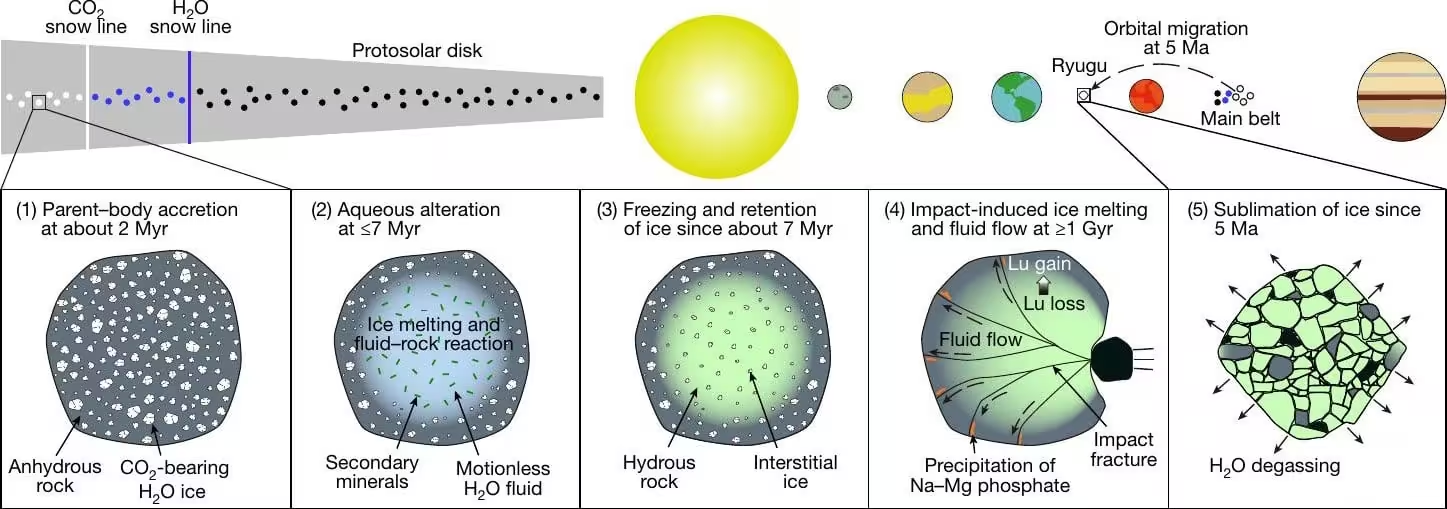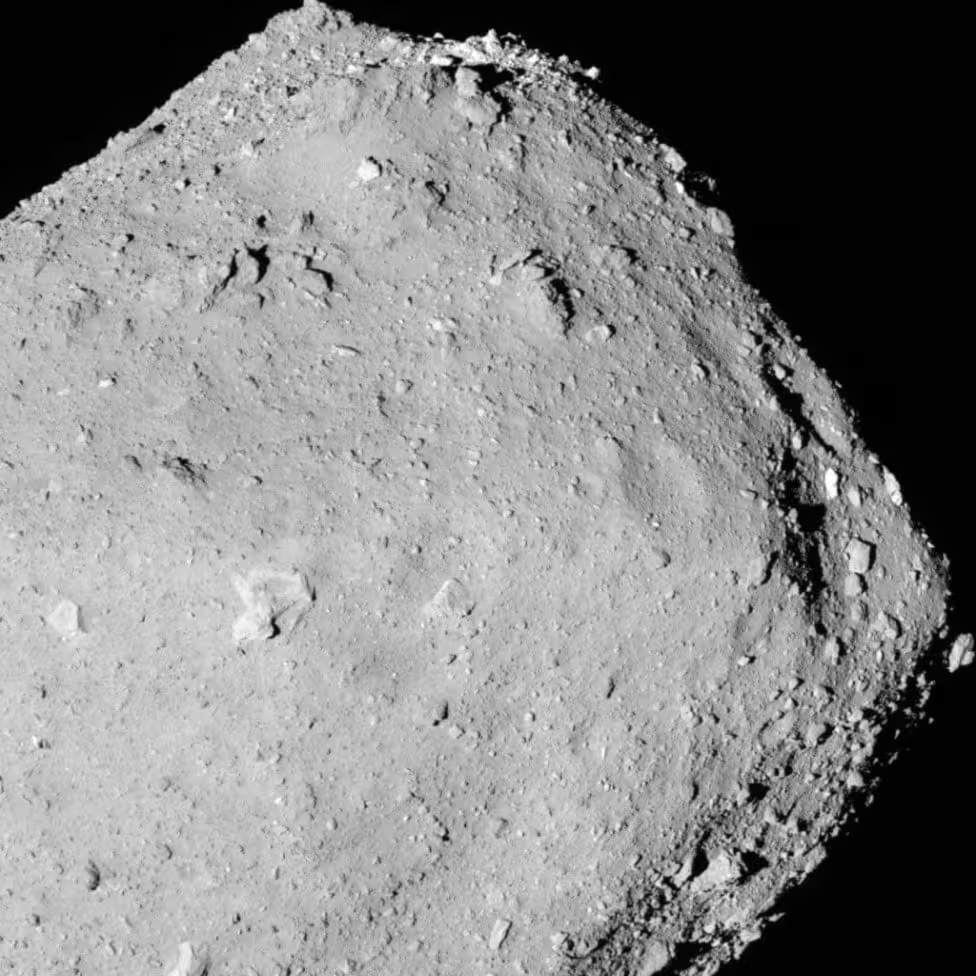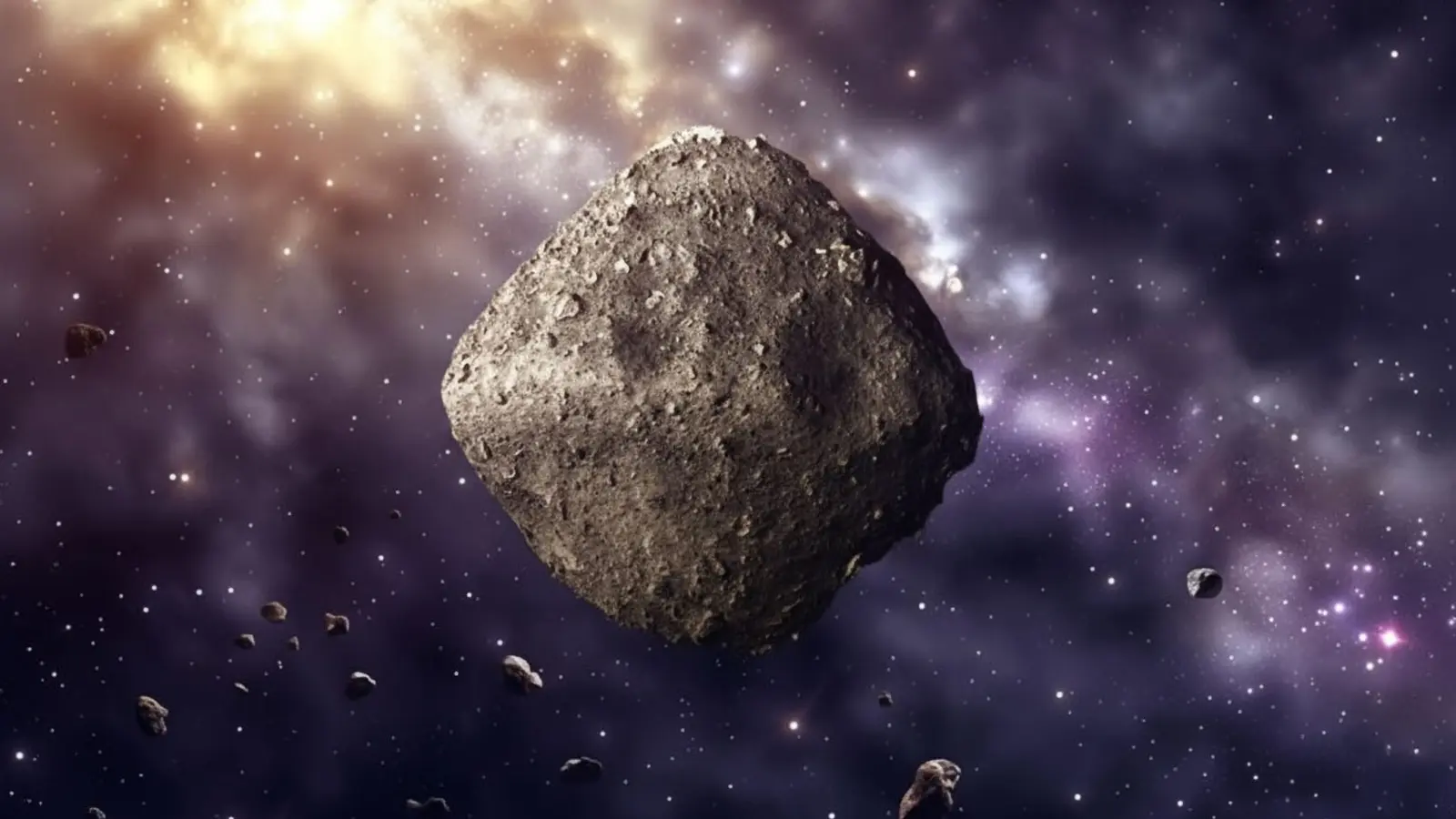7 Minutes
Liquid water on Ryugu: a surprising, long-lived record
A multinational team of researchers, including scientists from the University of Tokyo, reports that the parent body of near-Earth asteroid Ryugu hosted migrating liquid water more than a billion years after that body originally formed. The evidence comes from high-precision isotopic analyses of the tiny rock fragments returned by JAXA’s Hayabusa2 mission. These results overturn the prevailing view that water-driven alteration on carbon-rich asteroids was restricted to the earliest epochs of the solar system and has important implications for models of how Earth acquired its water.
Scientific background: why this matters for planetary formation
Understanding when and how water existed on small, carbon-rich bodies (often called carbonaceous asteroids) is central to major questions in planetary science: how volatile-rich material was redistributed across the early solar system, and how Earth obtained enough water to form oceans and support habitability. For decades, models assumed that aqueous alteration—the chemical interaction between rock and liquid water—occurred mostly during the first few tens of millions of years after formation when short-lived radioactive isotopes produced internal heat.
Ryugu, sampled by Hayabusa2 in 2018 and returned to Earth, is representative of such carbon-rich asteroids. Because it likely formed from ice and dust in the outer solar system, Ryugu and its parent body have been key targets for testing theories about water delivery to the terrestrial planets.
Method and discovery: isotopic clues of late fluid flow
The core of the study hinges on detailed measurements of lutetium (Lu) and hafnium (Hf) isotopes. In rocks, the radioactive decay of 176Lu to 176Hf acts as a geochronometer and as a tracer of chemical reworking. The research team found unexpectedly high ratios of 176Hf relative to 176Lu in several sample fragments. The anomaly is best explained if a fluid phase mobilized and selectively removed Lu from host minerals, leaving a surplus of Hf in the solid residue.
Researchers used advanced clean-lab chemistry and ultra-sensitive mass spectrometry to extract such a signal from only a few tens of milligrams of material per analysis. Hayabusa2 returned only a few grams total, so the team developed bespoke separation techniques to maximize elemental recovery and isotopic precision.
“We discovered a pristine record of water activity that occurred far later than standard models predict,” said Associate Professor Tsuyoshi Iizuka (Department of Earth and Planetary Science, University of Tokyo). “The Lu–Hf system in these grains was disturbed by a late fluid event—one that likely followed an impact that fractured the parent body and melted previously buried ice.”
Impact-triggered melting: a plausible trigger
The investigators propose that a significant collision on Ryugu’s larger parent body fractured rock and melted subterranean ice. Melted ice became liquid water that percolated through fractures and veins, chemically interacting with minerals and altering isotopic ratios. This scenario explains both the isotopic disturbance and the timing: the fluid activity occurred well after primary formation, implying ice remained preserved and available for melting for more than a billion years.

Diagram to show how the researchers think the evolution of Ryugu played out over at least a billion years. Credit: 2025 Iizuka et al. CC-BY-ND
Implications for Earth's water and volatile budgets
If Ryugu’s parent body retained ice for such an extended interval, other similar carbonaceous objects may also have preserved volatiles much longer than previously assumed. The team estimates that Ryugu-like impactors could have delivered two to three times more water to the early Earth than is commonly accounted for in standard accretion models. That revised budget would affect estimates of early ocean volume, atmospheric evolution, and the timing of surface habitability.
“This finding forces us to reconsider the initial volatile inventory of terrestrial planets,” Iizuka added. “If the building blocks were wetter, it changes the boundary conditions for models of Earth’s early climate and the origin of life.”
Mission and technique details
Hayabusa2 was the first mission to return samples from a primitive, carbon-rich near-Earth asteroid and therefore opened unique opportunities for laboratory geochemistry. Because total sample mass was small, each analytical technique had to be optimized. The team’s innovations included low-loss chemical separations that allowed multiple isotope systems to be measured on the same microscopic fragment, preserving context and enabling cross-checks among different chronometers.
Future work will target phosphate veins and other microstructures in the Ryugu material to date the late fluid episodes more precisely and to constrain conditions such as temperature, pH, and fluid composition. Comparative studies with NASA’s OSIRIS-REx samples from asteroid Bennu will test whether long-lived aqueous activity is a common feature among carbonaceous near-Earth asteroids or a distinctive property of Ryugu’s lineage.

Ryugu is named after a magical underwater palace in a Japanese folktale — appropriately enough it seems to be a palace for water in the real world too. Credit: Jaxa, UTokyo & collaborators CC-BY-ND
Expert Insight
Dr. Maya Alvarez, planetary geochemist (fictional), commented: “Finding evidence for liquid water migrating through an asteroid more than a billion years after formation is remarkable. It suggests that volatile retention on small bodies can be much longer-lived under certain conditions. That reshapes how we think about volatile delivery to planets and highlights the value of returned-sample science—laboratory instruments on Earth still outperform what we can fly in situ.”
Next steps and future prospects
Planned analyses include high-precision dating of phosphate veins, microstructural petrography, fluid-inclusion studies, and cross-comparison of isotope systems (e.g., Lu–Hf, U–Pb) to triangulate the timing and nature of fluid events. Because sample-return missions like Hayabusa2 and OSIRIS-REx provide benchmark materials, continued investment in laboratory geochemistry is critical for refining models of solar system evolution and planetary volatile inventories.
Conclusion
The Lu–Hf isotopic evidence from Hayabusa2’s Ryugu samples reveals that liquid water flowed through at least parts of the asteroid’s parent body more than a billion years after its formation. This discovery forces a re-evaluation of volatile retention and delivery in the early solar system and suggests carbon-rich asteroids may have contributed substantially more water to Earth than previously thought. Continued microscopic study of returned samples—and comparison with Bennu material—will refine the timeline and mechanisms by which small bodies stored, mobilized, and delivered water to the inner planets.
Source: scitechdaily


Leave a Comment